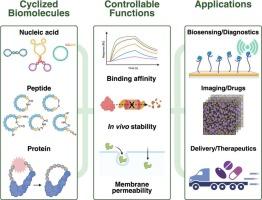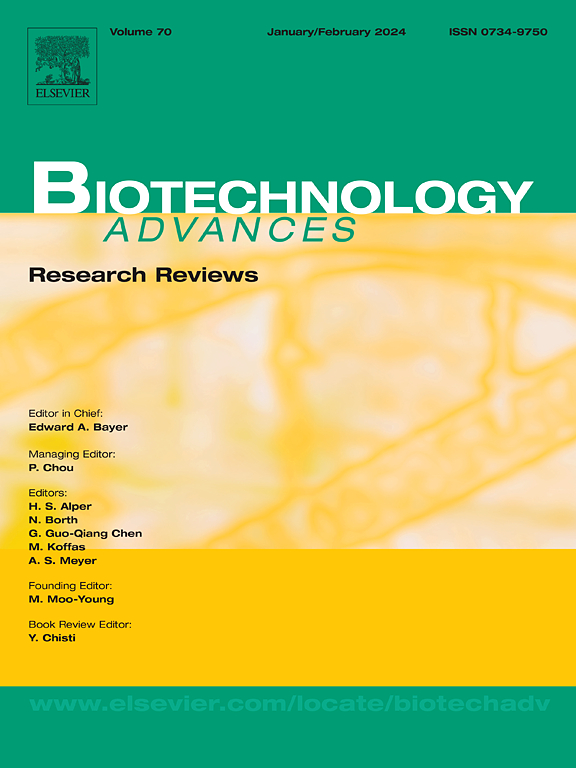Engineering cyclized biomolecules for advanced diagnostic and therapeutic applications
IF 12.5
1区 工程技术
Q1 BIOTECHNOLOGY & APPLIED MICROBIOLOGY
引用次数: 0
Abstract
Nucleic acids, peptides, and proteins demonstrate remarkable structural diversity and play essential roles in various biological processes. These biomolecules function as ligands, diagnostic agents, and therapeutic cargoes. However, their practical applications are often limited by inherent instability and inefficient delivery for targeted diagnosis and therapy. Cyclization has emerged as a promising solution, endowing these biomolecules with enhanced conformational rigidity, resistance to degradation, and a broader range of biological activities. Cyclic architectures not only enhance antitumor, anti-inflammatory, and anti-infective properties, but also eliminate the need for auxiliary carriers in some applications. This deliberate cyclization further enables precise control over binding affinity, stability, and membrane permeability. In this review, we cover diverse engineering methods for creating cyclized biomolecules and explore their applications in biosensing, targeted imaging, and delivery. Moving beyond naturally occurring forms, we highlight rationally engineered cyclized constructs that substantially expand their theranostic landscape in biology and biotechnology.

工程循环生物分子用于先进的诊断和治疗应用
核酸、多肽和蛋白质具有显著的结构多样性,在各种生物过程中发挥着重要作用。这些生物分子作为配体、诊断剂和治疗物资发挥作用。然而,它们的实际应用往往受到固有的不稳定性和低效率的靶向诊断和治疗的限制。环化已成为一种很有前途的解决方案,赋予这些生物分子增强的构象刚性,抗降解性和更广泛的生物活性。环状结构不仅增强了抗肿瘤、抗炎和抗感染的特性,而且在某些应用中消除了对辅助载体的需要。这种刻意的环化进一步实现了对结合亲和力、稳定性和膜渗透性的精确控制。在这篇综述中,我们介绍了制造环化生物分子的各种工程方法,并探讨了它们在生物传感、靶向成像和递送方面的应用。超越自然发生的形式,我们强调合理工程的环化结构,这大大扩展了它们在生物学和生物技术中的治疗前景。
本文章由计算机程序翻译,如有差异,请以英文原文为准。
求助全文
约1分钟内获得全文
求助全文
来源期刊

Biotechnology advances
工程技术-生物工程与应用微生物
CiteScore
25.50
自引率
2.50%
发文量
167
审稿时长
37 days
期刊介绍:
Biotechnology Advances is a comprehensive review journal that covers all aspects of the multidisciplinary field of biotechnology. The journal focuses on biotechnology principles and their applications in various industries, agriculture, medicine, environmental concerns, and regulatory issues. It publishes authoritative articles that highlight current developments and future trends in the field of biotechnology. The journal invites submissions of manuscripts that are relevant and appropriate. It targets a wide audience, including scientists, engineers, students, instructors, researchers, practitioners, managers, governments, and other stakeholders in the field. Additionally, special issues are published based on selected presentations from recent relevant conferences in collaboration with the organizations hosting those conferences.
 求助内容:
求助内容: 应助结果提醒方式:
应助结果提醒方式:


